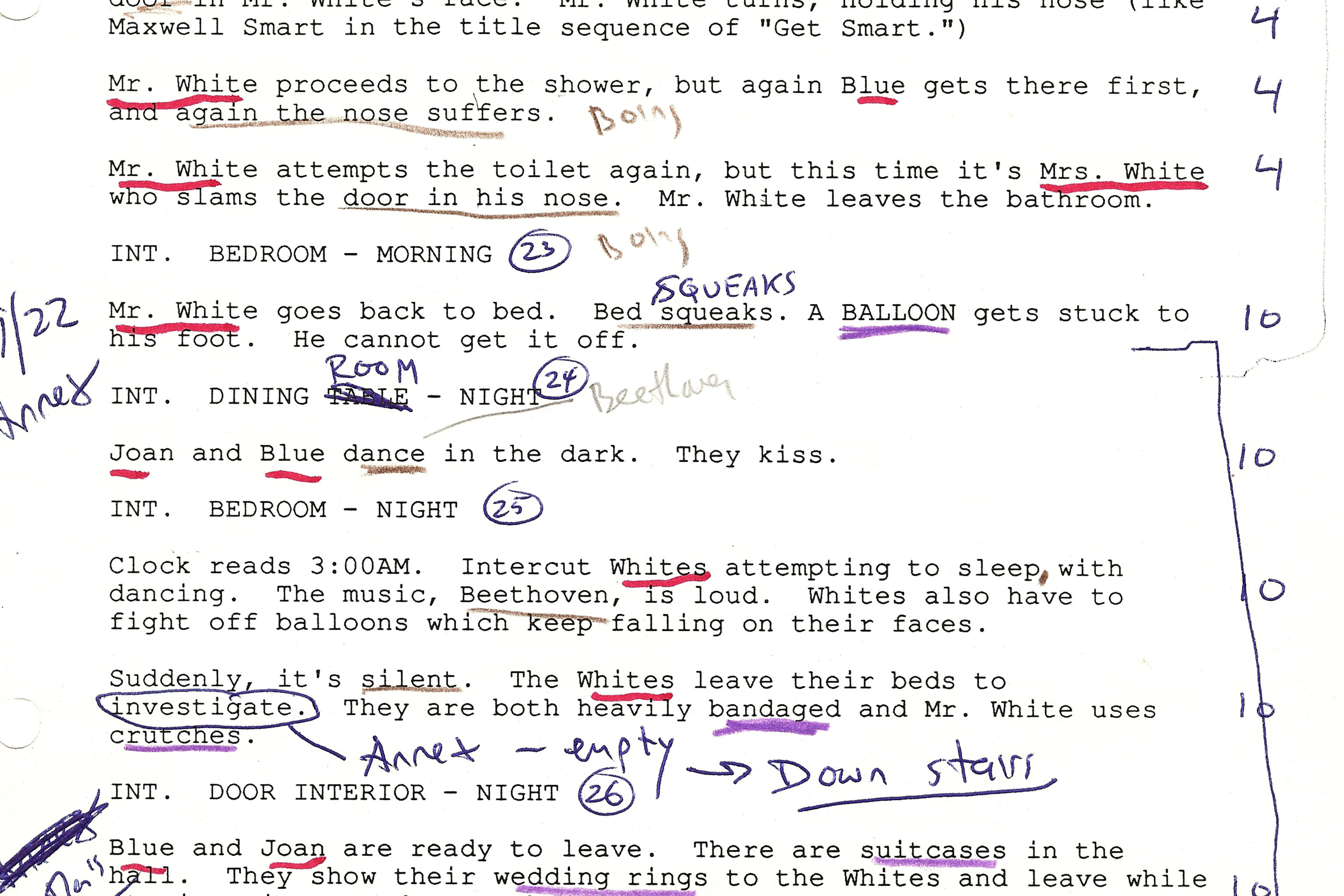Write a screenplay
Write a short three-scene screenplay by creating characters, dialogue, and stage directions, then storyboard and perform it with friends or family.



Step-by-step guide to write a short three-scene screenplay
Basic Elements of a Film Script for BEGINNERS! (How To Format, Read and Write a Screenplay!)
Step 1
Pick a simple story idea and write a one-sentence logline that explains what happens.
Step 2
Divide your story into three scenes and give each scene a short title like Beginning Middle and End.
Step 3
Make a list of the characters and write one-sentence descriptions of who they are and what they want.
Step 4
Write Scene 1 including short stage directions that tell where characters stand and what they do and the characters' dialogue.
Step 5
Write Scene 2 including short stage directions and the characters' dialogue.
Step 6
Write Scene 3 including short stage directions and the characters' dialogue.
Step 7
Create a title page with the play title your name and the three scene titles.
Step 8
Draw a storyboard by making three small panels for each scene on sticky notes or index cards showing the key moments.
Step 9
Write a short caption under each panel that explains the action and any important lines.
Step 10
Choose simple props and costumes from around the house for each character.
Step 11
Assign each role to a friend or family member and give them the pages or cards they need.
Step 12
Rehearse each scene together at least twice practicing lines movements and timing.
Step 13
Perform your three-scene screenplay for friends or family.
Step 14
Share your finished creation on DIY.org
Final steps
You're almost there! Complete all the steps, bring your creation to life, post it, and conquer the challenge!


Help!?
What can we use if we don't have sticky notes or index cards for the storyboard panels?
If you don't have sticky notes or index cards for the 'Draw a storyboard' step, cut printer paper into small panels or photograph three quick sketches on a phone/tablet to serve as the three small panels.
What should we do if actors keep forgetting their lines during rehearsal?
If actors forget lines during 'Rehearse each scene together at least twice,' make short cue cards with key words from each line and place them where each performer stands according to the 'short stage directions.'
How can we adapt the activity for younger or older children?
For younger children, simplify by using single-sentence loglines, one-action scene panels, toys as props, and single-line dialogue, while older kids can expand the character list, add detailed stage directions, and write fuller storyboard captions.
What are easy ways to extend or personalize our finished screenplay?
Extend and personalize the project by filming the 'Perform your three-scene screenplay,' adding homemade sound effects or simple music during editing, decorating props and costumes from around the house, and sharing the edited video on DIY.org.
Watch videos on how to write a short three-scene screenplay
How To Write A Screenplay (For Beginners)
Facts about screenwriting and drama for kids
✍️ Screenplays use a special, easy-to-scan format so directors, actors, and crew can quickly find actions and lines.
🗣️ Great dialogue often works with subtext: characters don’t always say what they mean, and that creates drama.
🎬 Most feature film screenplays are about 90–120 pages — roughly one page equals one minute on screen!
🎭 Stage directions help actors know movement and emotion — sometimes a single word like “softly” changes a whole scene.
🖼️ Storyboards were popularized by Walt Disney in the 1930s to plan scenes visually before filming.
How do I guide my child to write a short three-scene screenplay?
What materials do we need to write, storyboard, and perform a three-scene screenplay?
What ages is writing and performing a three-scene screenplay suitable for?
What are the benefits of having my child write and perform a short screenplay?


One subscription, many ways to play and learn.
Only $6.99 after trial. No credit card required



